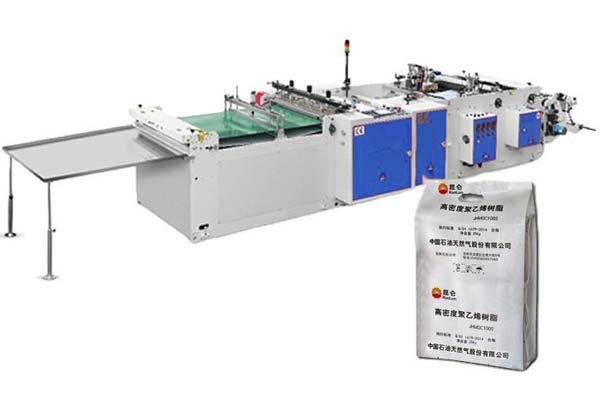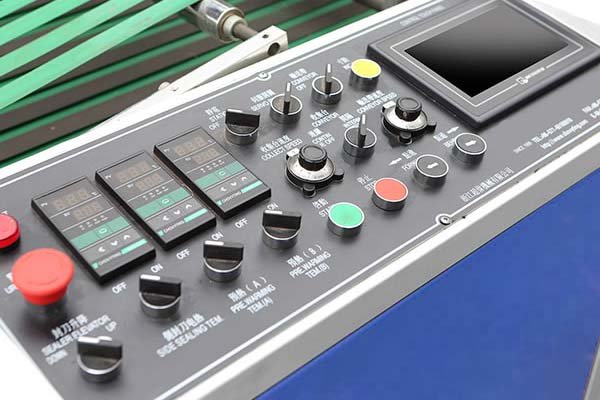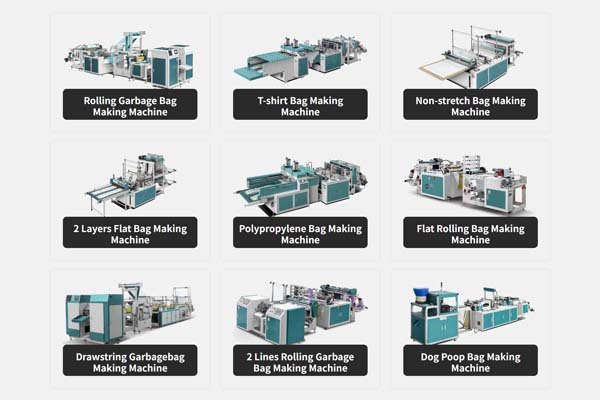
Choosing the right bag making machine is essential for efficient production and minimizing waste. Selecting an unsuitable model can cause delays, material loss, and additional costs. Understanding the main machine types can help in making an informed decision.
Roll-to-roll plastic bag making machines1 include side sealing, bottom sealing, and T-shirt bag machines. Additional models such as Wicketer, FFS, and heavy-duty machines2 serve specialized applications, including food packaging and industrial logistics.
These machines convert large rolls of plastic film into finished bags. They are categorized based on sealing method, bag style, and compatible materials. This classification helps match machine specifications to production needs—ranging from basic shopping bags to multi-layer laminated pouches.
The key distinction between machine types lies in the sealing and cutting mechanisms. Side sealers create vertical seams, often used for pouches. Bottom sealers apply strong seals at the base, suitable for heavy loads like garbage bags. T-shirt bag machines3 form handles and gussets in one process, optimizing retail bag production.
Choosing the Right Machine for Your Business
Selecting the ideal machine involves balancing performance, material compatibility4, and cost. The right choice should enhance productivity and integrate smoothly into your workflow.
To select an appropriate machine, assess four main factors: the type of bag being produced, production volume, material specifications, and budget.

A successful selection process goes beyond technical specifications. It should address broader operational needs. Many businesses benefit from consultations that tailor machine capabilities to specific requirements, such as uptime reliability or additional printing features.
Step 1: Identify Bag Type and Industry Use
Understanding the end-use application helps determine which machine is best suited.
- Retail & E-commerce: T-shirt or Patch Handle Bag Machines are common. High-speed variants can exceed 1,200 bags/hour.
- Food Packaging: Food-grade machines like FFS and Lamination Pouch Making Machines feature FDA-compliant components.
- Logistics & Industrial: Heavy Duty and Courier Bag Machines provide tear-resistant seams for high-strength applications.
- Medical & Hygiene: Machines for items like diapers meet strict hygiene and aseptic standards.
Step 2: Determine Volume and Automation Requirements
Production goals influence the choice between semi-automatic and fully automatic systems.
| Automation Level | Suitable For | Key Features | Production Speed |
|---|---|---|---|
| Semi-Automatic | Small runs, startups | Basic controls, manual setup | Up to 120 bags/minute |
| Fully Automatic | High output, established operations | Servo motors, PLC touchscreens | Over 200 bags/minute |
Automated systems reduce labor needs and improve consistency. Touchscreen interfaces are multilingual for easier operation.
Step 3: Ensure Material Compatibility
Machines must align with the type of plastic film being used.
- Standard Plastics: LDPE, HDPE, and PP are supported by most standard models.
- Biodegradable Films: Machines optimized for PLA and compostable films are available for sustainable packaging.
- Multi-Layer Laminates: Specialized machines are required for laminated films in food and medical applications.
"Smart Tension Control" technology is used to optimize material feeding and minimize film waste.
Defining a High-Quality Bag Making Machine
Machine quality influences durability, efficiency, and safety.
A high-quality machine typically features a strong steel frame, precision servo motors, a PLC control system, and built-in safety mechanisms that meet standards such as CE.

Modern machines often include IoT features for remote maintenance and diagnostics, helping to prevent downtime and increase efficiency.
Durability and Performance
Material selection and construction impact long-term machine reliability.
- Frame Construction: High-carbon steel frames offer stability and reduce vibration.
- Component Precision: Critical parts are tested to maintain a ±2% tolerance.
- Corrosion Protection: Protective coatings extend machine life in humid conditions.
- Stress Testing: Each unit undergoes a 72-hour continuous operation test before delivery.
Smart Features for Operational Efficiency
Technology supports faster production and accuracy.
- Servo Motors: Allow precise control while reducing energy use by up to 30%.
- Smart Tension Control: Adjusts tension automatically to maintain bag uniformity.
- PLC Interface: Provides intuitive, multilingual controls for simplified training and operation.
Safety Standards
All machines are equipped with features designed to protect operators.
| Safety Feature | Function | Certification |
|---|---|---|
| Emergency Stops | Instantly shuts down the machine | CE |
| Protective Guards | Prevents contact with moving parts | ISO 9001 |
| Overload Protection | Stops motor during excessive load | CE |
| Safety Sensors | Detects obstructions or misalignments | CE |
Pricing for Roll-to-Roll Plastic Bag Making Machines
Cost is determined by machine complexity, automation, and custom features.
BagMec® machine prices range from $8,500 for basic models to $88,000 for high-end Wicketer bread bag machines. Pricing varies based on configuration and feature set.

Both startups and large-scale manufacturers can find suitable options. Transparent quotes are typically provided within 48 hours.
Price Determinants
Several elements influence the final price:
- Machine Type: Simpler models are more affordable than multifunction systems.
- Automation Level: Fully automated machines have higher upfront costs but greater efficiency.
- Optional Features: Add-ons like QR code printers or die-cut units add value and cost.
- Production Speed: Higher output models require more advanced engineering.
Sample Price Ranges by Machine Type
| Machine Type | Estimated Price (USD) |
|---|---|
| Patch Handle Bag Machine | $8,500 – $15,500 |
| Side Sealing Machine | $10,500 – $18,500 |
| Heavy Duty Bag Machine | $12,000 – $23,000 |
| Zipper Bag Machine | $15,000 – $22,000 |
| T-Shirt Bag Machine | $17,000 – $32,000 |
| Courier/DHL Bag Machine | $23,000 – $35,000 |
| Garbage Bag Machine | $23,000 – $35,000 |
| Diaper Bag Machine | $25,000 – $70,000 |
| Food Packaging Machine | $30,000 – $68,000 |
| Loop Handle Bag Machine | $33,000 – $38,000 |
| Lamination Pouch Machine | $34,000 – $67,000 |
| FFS Machine | $34,000 – $48,000 |
| Wicketer Bread Bag Machine | $69,000 – $88,000 |
BagMec® offers global shipping under EXW, FOB, CIF, or DDP terms.
Conclusion
Understanding the types, features, and pricing of roll-to-roll bag making machines is essential for an informed purchase. Selecting a machine that matches your production needs ensures efficiency and reliability. Working with an experienced manufacturer helps simplify the process and optimize your investment.
-
Learn about Roll-to-roll machines and how they can streamline your bag production process. ↩
-
Discover the robust features of heavy-duty machines designed for industrial applications. ↩
-
Find out how T-shirt bag machines operate and their advantages for retail packaging. ↩
-
Explore the importance of material compatibility for optimal machine performance. ↩






